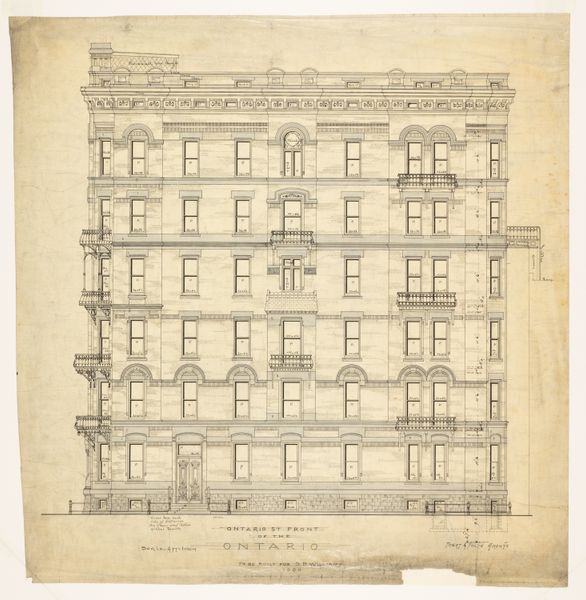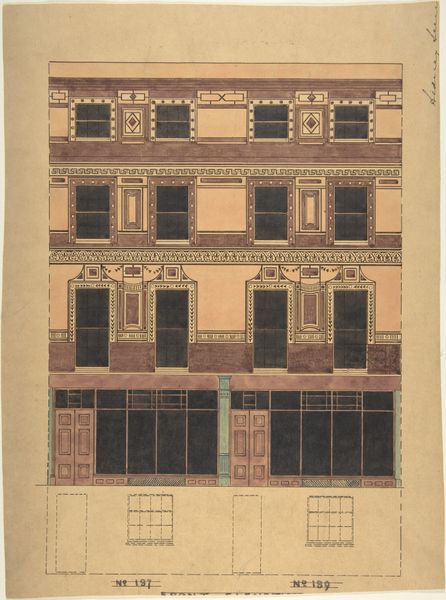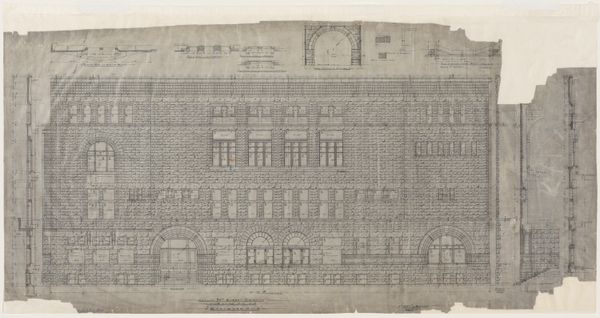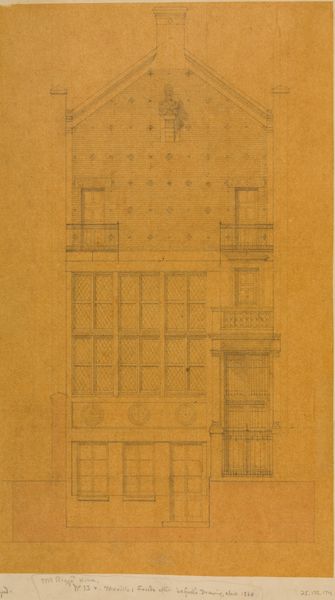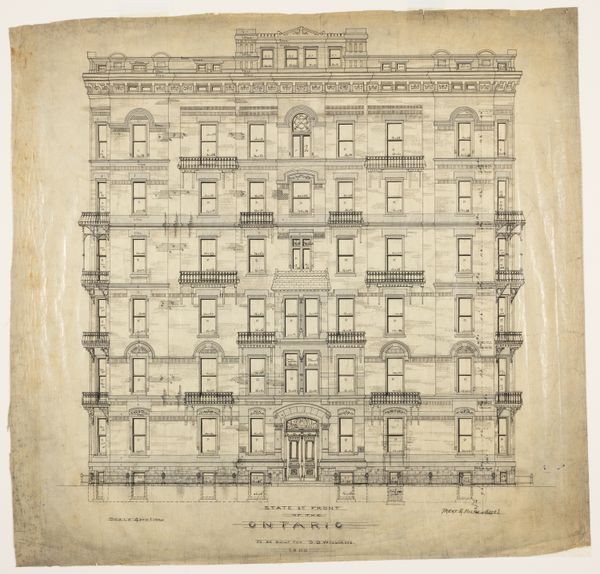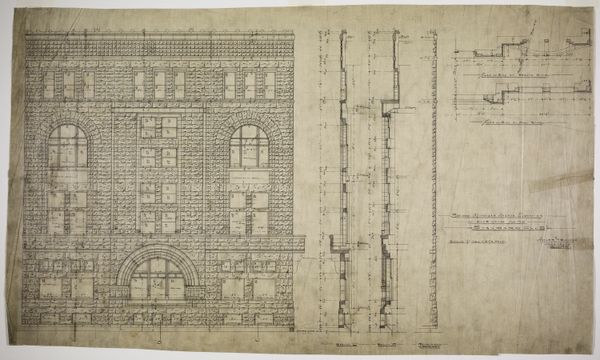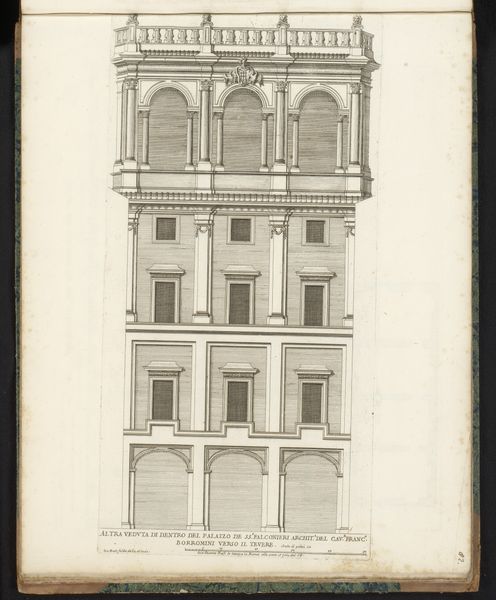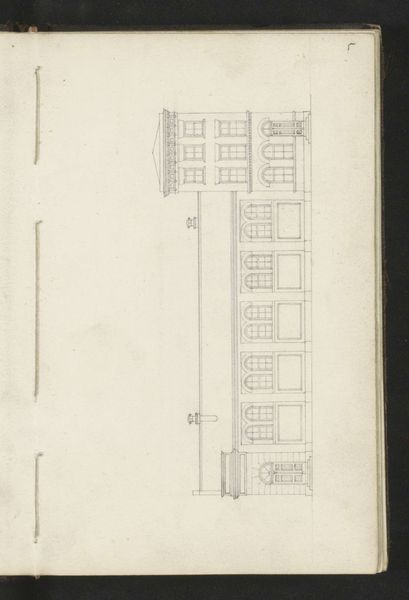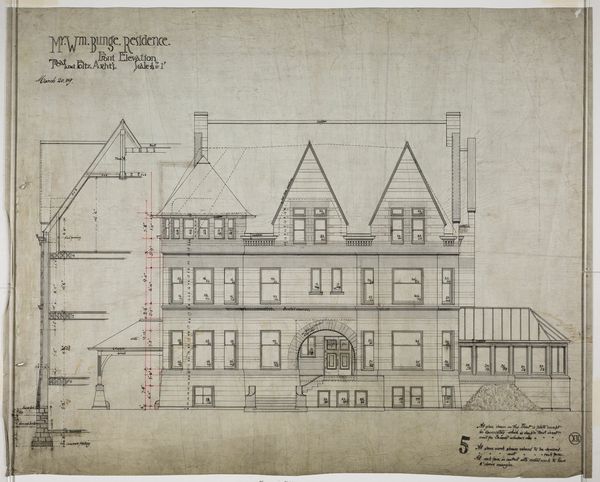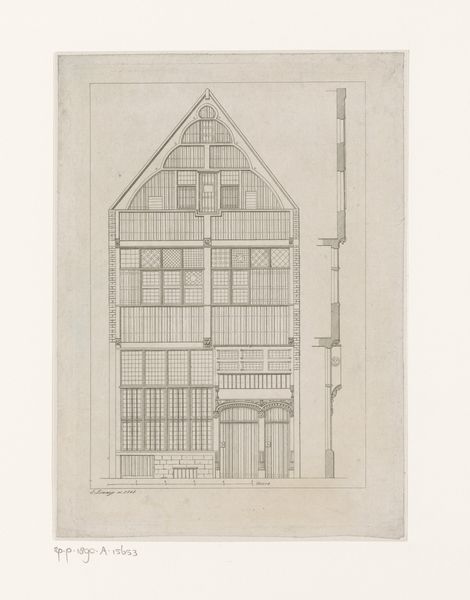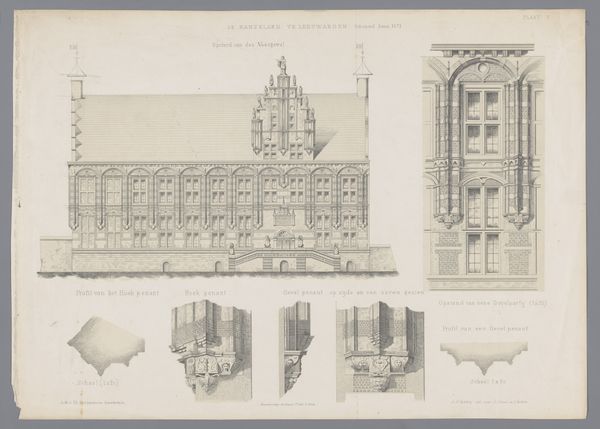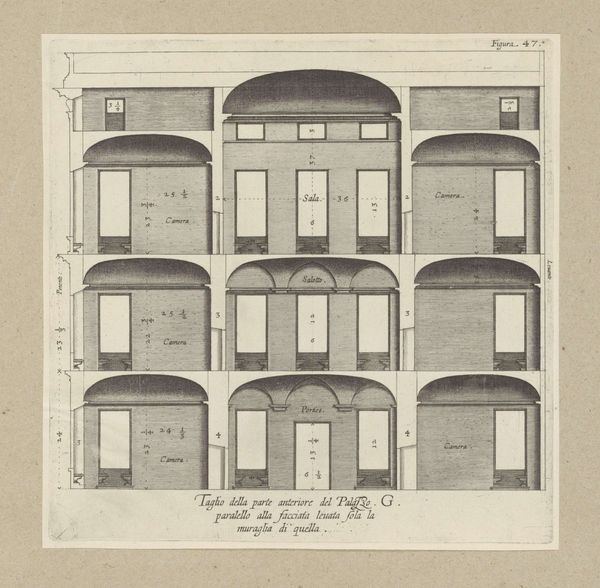
Lakeside Press Building, Chicago, Illinois, Front Elevation Possibly 1896
0:00
0:00
drawing, ink, architecture
#
drawing
#
ink
#
geometric
#
architectural drawing
#
line
#
architecture
#
realism
Dimensions: 95.5 × 76.2 cm (37 5/8 × 30 in.)
Copyright: Public Domain
Curator: Before us, we have "Lakeside Press Building, Chicago, Illinois, Front Elevation," a drawing possibly from 1896, credited to Treat and Shaw, Associated Architects. The Art Institute of Chicago holds this fascinating piece, meticulously rendered in ink. Editor: My first impression is of austere beauty, like a hymn etched in lines. The precision suggests a temple to industry. There's a strange coolness, despite the classical nods. Curator: I see what you mean. This was the age of the City Beautiful movement; there was an intense desire to project order, reason, and civic pride through architecture. The arches and symmetry resonate with that cultural aspiration, even in a utilitarian space. Editor: Absolutely. The repetition of those windows... it almost becomes a symbol of industrial production itself. A window for every worker, every idea churned out by the Lakeside Press. Are there deliberate references to, say, Roman basilicas or Renaissance palazzi, perhaps? Curator: Precisely! The archways echo classical triumphal arches, subconsciously connecting this center of commerce to the legacy of empires. Note, also, the subtle details above the windows. Tiny decorative motifs implying learned values and traditions in bookmaking and publishing. It's as if Treat and Shaw sought to sanctify the printed word, using familiar iconography to suggest its elevated role. Editor: The symbolism definitely elevates it beyond a mere blueprint. I’m drawn to how those symbols become increasingly linear the further up you look: the top section, especially, is interesting: what should’ve been complex, organic detail becomes more abstract, as if pointing to something modern and geometric. Curator: Good eye! One must consider the cultural context—Chicago's rapid industrialization, its aspirations as a global hub. This building wasn't just a workplace. It represented the city's identity—progressive, yet rooted in enduring cultural values. Editor: A fascinating blend of aspiration and heritage. Standing here, examining every drawn line, gives you such a detailed look into Chicago's history. It is also kind of exciting to be talking about a cultural monument. Curator: Yes, a quiet monument whose symbols whisper stories of a city and its ambitions, skillfully etched in ink.
Comments
No comments
Be the first to comment and join the conversation on the ultimate creative platform.
